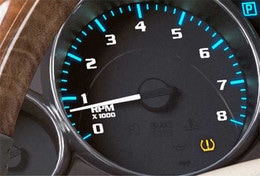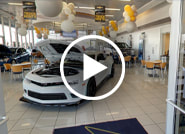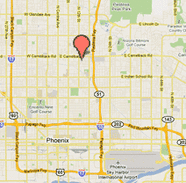 WHY IS TIRE PRESSURE IMPORTANT? Air is a gas, expanding when heated and contracting when cooled. For most of North America, fall and early winter are especially important times for checking tire pressure — as the ambient temperature falls, tire pressure goes down. A good rule of thumb: with every 10 degrees Fahrenheit of temperature change, tire pressure changes about 1 psi — higher as temperatures rise, lower as they fall. What happens if a tire is underinflated?
Check your tires at least once a month when the weather is cold (let the vehicle sit for at least 3 hours). The Tire Information Label located on the inside of your doorframe has the recommended cold tire pressure for your vehicle. Learn more about tire load information here. Use a quality gauge. Don't try to eyeball it — radial tires may appear fine even when they're underinflated. Look for objects that can get wedged in the tread — they'll work themselves even further into the tire and cause air loss. To make sure you're covered, every check of your tires should include a check of your spare (if available), as well. WHAT IS A TIRE PRESSURE MONITORING SYSTEM? The Tire Pressure Monitoring System is designed to warn the driver when low-tire-pressure conditions exist. A sensor measures tire pressure and temperature, then transmits data to the tire-pressure monitor. If the pressure in one or more of your tires is 25 percent or more below the vehicle manufacturer's recommended cold inflation pressure for tires, a warning indication will alert the driver. Your Original Equipment TPMS sensor battery can last up to 10 years with normal use. When the TPMS battery fails, the sensor will need to be replaced. How do you know that air pressure is low or whether the TPMS has malfunctioned? If the Tire Pressure Monitor light comes on and stays solid with a check tire pressure, low tire pressure, or add air to tire message, then check and adjust all tire air pressures to the recommended levels. Next, drive the vehicle to turn the light off. If the Tire Pressure Monitor light appears as a blinking yellow lamp for more than one minute and stays solid, then diagnostic service is needed. If your TPMS is not functioning properly, it cannot detect or signal a low-tire condition. IS NITROGEN BETTER THAN AIR IN YOUR TIRES? The use of nitrogen gas to inflate tires is available through some dealers. Benefits under controlled conditions include:
Inflation pressure maintenance of tires is critical for overall tire and vehicle performance. Maintaining the correct inflation pressure allows the tire to perform as intended, including for comfort, fuel economy, stopping distance, cornering, traction, tread wear, and noise. General Motors' stance on use of nitrogen gas in tires: General Motors does not oppose the use of nitrogen gas in tires. We expect the theoretical benefits to be reduced in practical use due to the lack of an existing infrastructure to continuously facilitate inflating tires with nearly pure nitrogen. Even occasional inflation with compressed atmospheric air will negate many of the theoretical benefits. Given those theoretical benefits, practical limitations, and the robust design of GM Original Equipment TPC tires, the realized benefits to our customers of inflating their tires with purified nitrogen are expected to be minimal.
0 Comments
Your comment will be posted after it is approved.
Leave a Reply. |
Welcome to the Courtesy Chevrolet blog – your place for Chevrolet news and reviews. Brought to you by Courtesy Chevrolet.
Website: CourtesyChev.com Phone: 602-798-2940 Click here to take a virtual walk-through of Courtesy Chevrolet.
LocationClick map to enlarge
Centrally located 1233 E. Camelback Road in Phoenix, Arizona, 85014 Click here for our hours Like Us On FacebookFollow Courtesy Chevrolet on TwitterArchives
May 2024
Categories
All
Produced by 72 Advertising
|
Courtesy Chevrolet - 1233 E. Camelback Rd. Phoenix, AZ 85014 - Phone: 1-888-267-5511







 RSS Feed
RSS Feed